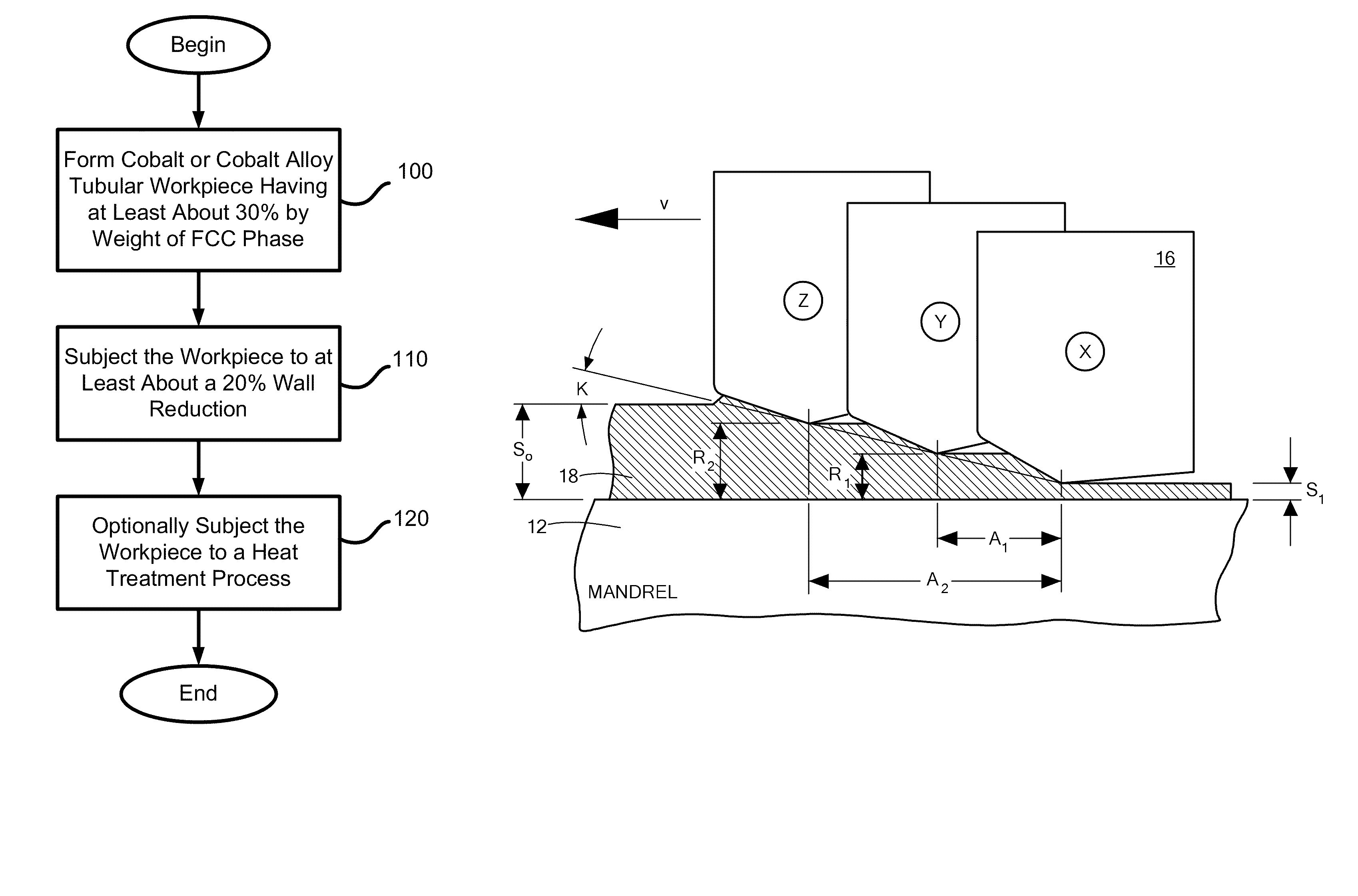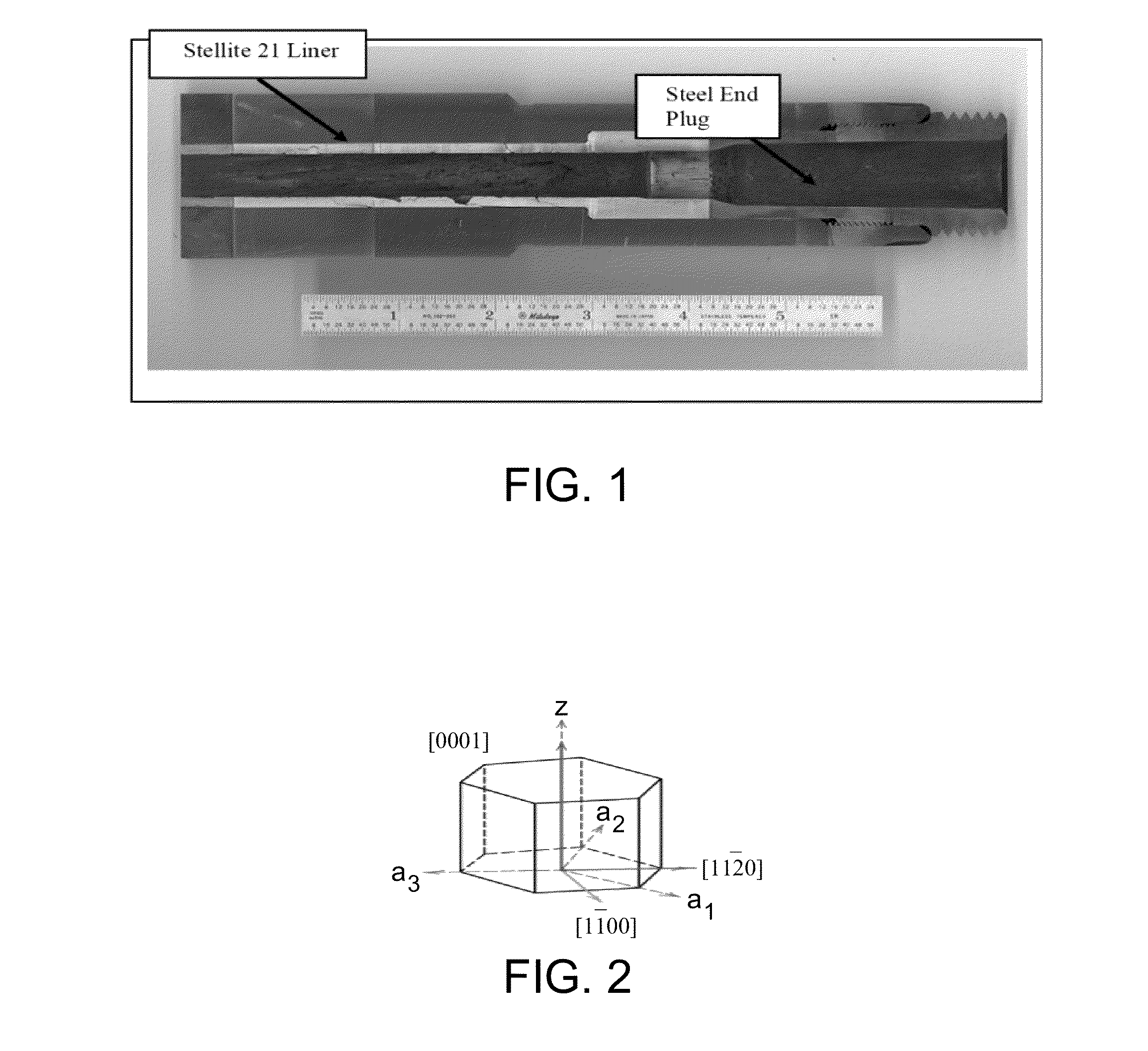Stress induced crystallographic phase transformation and texturing in tubular products made of cobalt and cobalt alloys
a technology of stress-induced crystallographic phase transformation and texturing, which is applied in the field of tubular components, can solve the problems of catastrophic burst of barrels, increased brittleness, and high strength brittle materials in gun barrels
- Summary
- Abstract
- Description
- Claims
- Application Information
AI Technical Summary
Benefits of technology
Problems solved by technology
Method used
Image
Examples
Embodiment Construction
[0011]In accordance with one embodiment of the invention, a method of producing a cobalt-based tubular product includes forming a cobalt or cobalt alloy tubular workpiece having at least about 30% by weight of fcc phase, and subjecting the workpiece to at least about a 20% wall reduction at a temperature below a recrystallization temperature of the workpiece using a metal forming process. The metal forming process may include radial forging, rotary swaging, pilgering and / or flowforming.
[0012]In accordance with related embodiments, the temperature of the metal forming process may be around room temperature. The method may further include annealing the workpiece after subjecting the workpiece to the wall reduction. The method may further include forming a rifling on an inner diameter of the workpiece. When the metal forming process is flowforming, the flowforming may include at least two flowforming passes and the workpiece may be annealed between the flowforming passes. The workpiece...
PUM
| Property | Measurement | Unit |
|---|---|---|
| temperatures | aaaaa | aaaaa |
| inner diameter | aaaaa | aaaaa |
| grain size | aaaaa | aaaaa |
Abstract
Description
Claims
Application Information
 Login to View More
Login to View More - R&D
- Intellectual Property
- Life Sciences
- Materials
- Tech Scout
- Unparalleled Data Quality
- Higher Quality Content
- 60% Fewer Hallucinations
Browse by: Latest US Patents, China's latest patents, Technical Efficacy Thesaurus, Application Domain, Technology Topic, Popular Technical Reports.
© 2025 PatSnap. All rights reserved.Legal|Privacy policy|Modern Slavery Act Transparency Statement|Sitemap|About US| Contact US: help@patsnap.com



